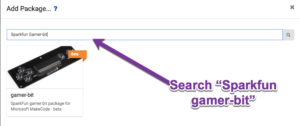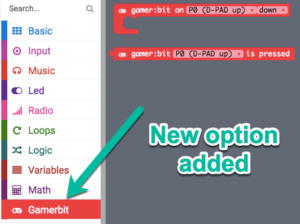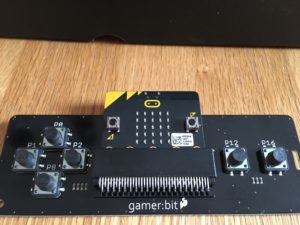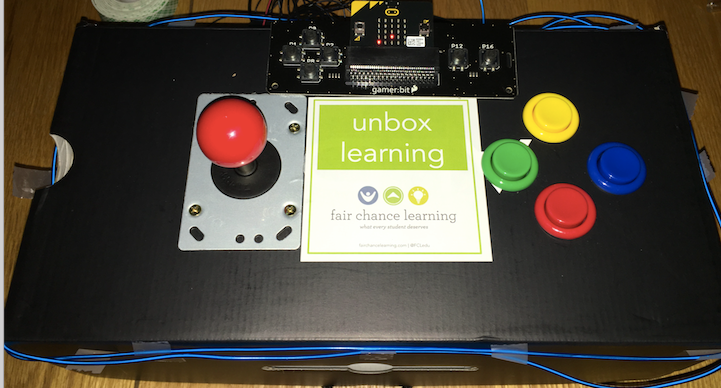Creating with micro:bit
One thing I aim for when introducing new educational technology into my classroom is how it makes students think and whether or not it allows students to become creators of content rather than consumers. The micro:bit is a powerful tool on it’s own but some students are looking to extend beyond their comfort level and create meaningful content in the form of games. This approach really supports understanding several fundamental computer science concepts.
The greater benefit I see in making games is that it provides ample opportunity for subject integration. Attempting to create fully immersive experiences while adhering to intended outcomes can be daunting for some and these “maker” based projects can provide that landscape.
Sample: This is a fully functioning micro:bit arcade
This project is really a fully immersive experience which starts with a recycled shoebox. This task really goes beyond gaming. I see value in the creation stage. There are several elements which could be integrated into any curriculum including: volume/surface area of the workspace, circuitry, visual art connections, geography natural resources/sustainability, etc.
It’s odd we haven’t even spoke to the coding aspect of this project. The purpose of this post was to be quick and show a viable option for teachers looking for something beyond what they’ve done. Of course we can reference the benefits associated with “computational & design thinking” but that’s for a separate post. An additional great feature of micro:bit gaming is that it allows students to pursue alternative programming languages while transitioning from block based programs to more syntax driven editors.
Required Materials:
It really varies contingent on comfort level and intended outcomes but here are some guidelines:
- A cardboard box
- I ordered a gamer-bit fom SparkFun but there are others available
- You have the option of purchasing a joystick and arcade push buttons but you can make them yourself out of most material or 3D printed material (https://www.amazon.com/EG-Starts-Joystick-Illuminated-Raspberry/dp/B01M2X88QP/ref=pd_lpo_vtph_200_bs_img_1?_encoding=UTF8&psc=1&refRID=QZAMS9KQ7VZMHS4B3AH3) *sample
- micro:bit which could easily be substituted with Makey Makey
Below are some images along with videos for how to connect gamer:bit using Microsoft MakeCode
MakeCode offers the option to add “Packages” or external devices to pair with your micro:bit

MakeCode gamer-bit

gamerbit option
Here is a video tutorial on how to implement the device:
To use the device you simply insert your micro:bit into the gamer:bit as shown below.

gamer-bit with micro:bit
As always please reach out if you have questions or need support!
DT


2 Comments on “Creators of Content through Gaming via the micro:bit”
Pingback: This Week in Ontario Edublogs – doug — off the record
Pingback: This Week in Ontario Edublogs | voicEd.ca